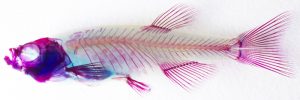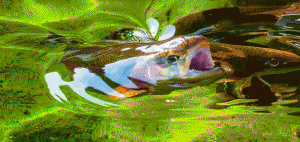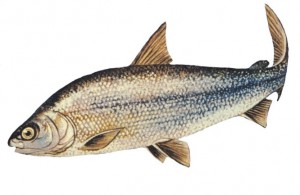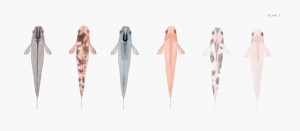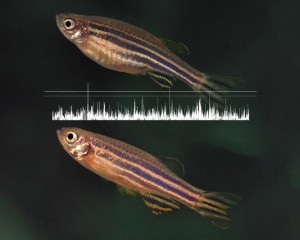Enter your address to receive notifications about new posts to your email.
Articles tagged Fish
(15 results)
-
100 years since the medaka’s international debut: Aida’s legacy
From a Kyoto garden to scientific discoveries. Since the 17th century, medaka fish have been bred for their beautiful colors. Shortly after the 1900 re-discovery of Mendel’s laws of inheritance, medaka began to be used for genetic studies. Recessive inheritance of the orange-red (b) and white (r) variants, female-limited appearance of the white phenotype, and an…
-
How an earthquake shook up stickleback genomes
New genetic data help explain the rapid adaptation of stickleback fish that invaded freshwater habitats in the 1960s. In 1964, an earthquake shook the islands off the coast of Alaska, transforming the landscape as underwater terraces were thrust above the surface. From this cataclysmic event emerged a series of freshwater pools that became a natural…
-
Videos from PEQG18 Keynote and Crow Award sessions
Watch presentations from the conference, including talks from Katie Peichel and Jonathan Pritchard. Now that the dust has settled from the whirlwind of the first ever standalone GSA Population, Evolutionary, and Quantitative Genetics Conference (PEQG18), we’re delighted to be able to share the audio and synched slides from the Keynote and Crow Award sessions. We’re…
-
Beautiful Piles of Bones: An Interview with 2017 Genetics Society of America Medal Recipient David M. Kingsley
The Genetics Society of America Medal is awarded to an individual for outstanding contributions to the field of genetics in the last 15 years. Recipients of the GSA Medal are recognized for elegant and highly-meaningful contributions to modern genetics, exemplifying the ingenuity of GSA membership. The 2017 recipient is David M. Kingsley, whose work in…
-
David Kingsley awarded 2017 Genetics Society of America Medal
We are pleased to announce that David Kingsley, PhD is the 2017 recipient of the GSA Medal for outstanding contributions to the field of genetics in the past 15 years. His experimental work has shifted paradigms about how the physical traits of vertebrate organisms evolve. Kingsley is a Professor and Howard Hughes Medical Institute Investigator…
-
#TAGC16 Shorts: ancient roots of arthritis
#TAGC16 Shorts are brief summaries of presentations at The Allied Genetics Conference, a combined meeting of seven genetics research communities held July 13-17, 2016 in Orlando, Florida. Elbows, knuckles, and the other synovial joints in your body are mobile marvels of evolution. These joints allow a huge range of possible movements thanks to the presence of…
-
Fish with robot friends: linking genes to behavior
The relative contributions of nature and nurture to behavior are a perennial source of dispute. That there is a genetic component is clear, but frustratingly, only a handful of specific genes are known to directly influence behavior in vertebrates. In the June issue of GENETICS, Greenwood et al. describe how they pinned down one of…
-
Rapture sequencing: fast, low-cost, large-scale genotyping
A fisherman trying to catch rainbow trout (Oncorhynchus mykiss) needs the right tools: proper flies, a strong rod, and a little bit of know-how. A scientist trying to understand the genetic population structure of rainbow trout in the Fall River watershed of northern California also relies on a trusty toolkit – albeit a very different…
-
Multiple Paths to the Same Result: Parallel Evolution in Lake Whitefish
For Lake Whitefish, history has repeated itself. Across the St. John River region that spans Québec and Maine, these freshwater fish have continually evolved in the same way. Within the many individual lakes in this area, Lake Whitefish have diverged into two groups differentiated by size and body shape. These two groups, known as “dwarf”…
-
Medaka Genetic Toolbox: Old fish, new tricks
Since the 17th century, the tiny medaka fish that dart through rice paddies in Japan have been bred as living ornaments. Though in the wild they are a nondescript mud color, medaka occasionally turn up in flashier mutant varieties — orange-red, pearlescent white, black splotched — that were much prized by generations of fish fanciers.…
-
Wild zebrafish sex: a lab mystery solved
Laboratory zebrafish hide a dirty little secret. Although the tiny fish have proven to be a vital model of vertebrate development and disease genetics, zebrafish reproduction—at least in the lab—has wildly variable outcomes. Offspring sex ratios can vary from extremely male-biased to extremely female-biased, depending on which breeding pairs serve as parents. The reason for…






